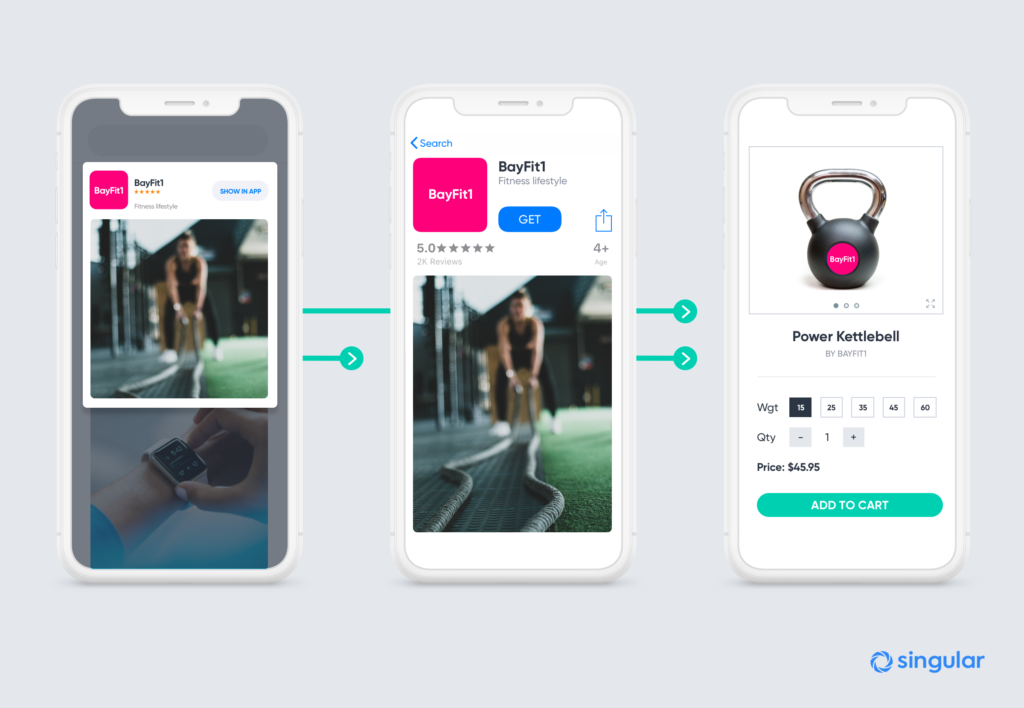Evaluating the true impact of web-to-app conversions
In this first article in a series on cross-device attribution, we describe why marketers should leverage the web as a meaningful acquisition channel, even with app-only products.
Introduction
Traditionally, mobile attribution providers have outright avoided the web. Or, they’ve offered limited solutions built with problematic assumptions and mobile-centric design that lack the technical depth to properly address the web as a meaningful acquisition platform—even for entirely mobile apps.
This is changing. As advertisers get smarter, tools get smarter, and vendors are looking to expand and provide better solutions as they continue to compete with each other in the busy SaaS MarTech space.
Interestingly enough, while the above is clearly relevant for products that contain both mobile and web—whether it’s mobile web or desktop—it’s also becoming more relevant for “pure” mobile apps that aim to acquire users through mobile search, web-based registration flows, and other web-focused acquisition strategies.
Why web?
Almost all user acquisition teams today end up running campaigns on the web. For products that support both mobile and web, running web ads that lead to your web-based product typically yield higher conversion rates, which then provide easier paths for having users download your app. However, even app-only products end up having ads showing on mobile web inventory, with links typically leading to app stores. This leads to poor conversion rates.
However, arguably the biggest missed opportunity by not running paid ads or other types of web campaigns is Search. Search is a great way for people to find your app or website. And, the ability to optimize your acquisition by understanding how different campaigns, keywords, and content work is vital to maximizing your budget.
Sadly, most mobile attribution providers are as their name suggests—focused on mobile. Solutions are very limited and lack the technical depth to support the variety of user flows between web and mobile.
Web-to-app tracking: just one use web/mobile case
Web-to-app tracking is a great use case to start with, as we begin to unfold the variety of user journeys between web and mobile. The term commonly refers to the situation where someone visits a web page while using their mobile device.
Perhaps this web page is the full-blown product. It could also be a simple landing page. In both cases, users see a link to install the app. Most often, this appears as a banner at the top or bottom of the page.

In most cases, marketers would rather let the user convert first, for example by making a purchase of the product they originally searched for. This would intuitively increase the chances of a user wanting to download a new app. In some cases such as mobile gaming, the user’s intent is higher (they’ve reached this page after their search), and direct download may be ok.
The first scenario of a user converting on the web requires the attribution provider to support web attribution. We’ll get back to this later.
Let’s focus on the second use case, where the user came in from Search or from a web ad, to then click a link and download the game. The important question we ask ourselves as marketers here is what do I know about this user? Which campaigns did they come from? Which ad groups or ad sets, and how much did I pay for them? What are the keywords that work better for me, and what terms result in higher click-through rates?
All of these questions are what a capable attribution provider should answer.
When tracking web-to-app conversions, the ideal report is one that allows you to focus on a specific channel, dive into each and every campaign, and understand what the campaign is yielding in terms of app installs, post-install conversions, and eCPI and eCPA for different components within the campaign or the campaign as a whole. This allows us to compare it to other paid campaigns and activities.
There are even more fundamental questions such as:
- How should I create the right links?
- What UTM parameters should I use and how?
- Can I link a UTM parameter to an app install?
Unfortunately, traditional tools today lose this context and as a result, reporting options are either not showing any context previous to the web page visit, or a very limited one.
Fortunately, the solution needed to solve the problem isn’t that complex. But it does require an understanding of both web tracking—how partners work and what UTM parameters should contain—and mobile. And, most importantly, how to tie the two together.
What’s next?
In the following articles we’ll dive deeper into the mechanics of how web-to-app tracking works, as well as continue to more advanced topics such as web tracking and the Holy Grail—cross-device attribution.

If you’d like to learn more about Singular’s web-to-app and cross-device capabilities, please reach out to schedule a demo.
Stay up to date on the latest happenings in digital marketing


